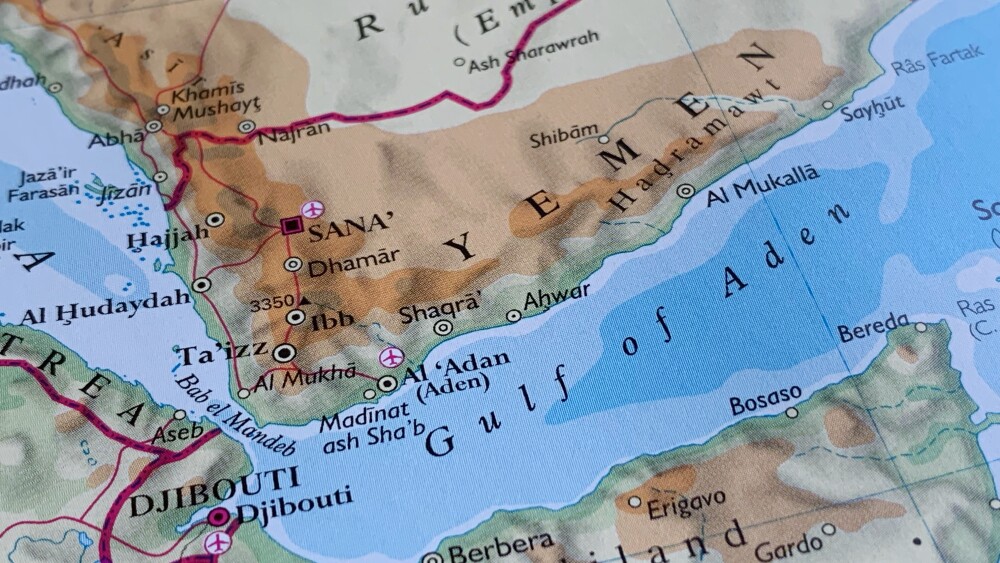ADEN, YEMEN—When American citizens in Ukraine need to visit the U.S. embassy, they face no obstacles; the U.S. Embassy in Kyiv is open and provides a full range of services. The U.S. Embassy in Moscow also continues to operate, albeit with a skeleton staff due to restrictions imposed by the Kremlin. Yet in Yemen, the epicenter of the battle against Iranian proxies and illiberal forces, the U.S. diplomatic presence is absent. There is no excuse.
The Southern Movement liberated Aden from Houthi control one decade ago. Aden since has been stable, despite efforts to disrupt it by the Muslim Brotherhood, Al Qaeda in the Arabian Peninsula, and even the northern components of the Internationally Recognized Government.
The U.S. Embassy for Yemen ... operates from Riyadh, Saudi Arabia, almost 850 miles away.
Aden today is a city on the move. While battle damage remains evident, so too do signs of recovery: Not only men, but also women roam the corniche along Aden’s natural harbors. Children play in parks, scrambling for ice cream and snow cones. Teens and twentysomethings play soccer in the city’s many fenced-in fields. Young families flock to the modern, air-conditioned mall. Commerce and nightlife in the Crater—the city’s oldest neighborhood—continue into the early morning hours.
The U.S. Embassy for Yemen, meanwhile, operates from Riyadh, Saudi Arabia, almost 850 miles away. Geographically, that is akin to running the U.S. Embassy for the United Kingdom from Zagreb, Croatia. Given that Saudi Arabia is now more prone to appeasing the Houthis than it is to be defeating them, this is akin to running the U.S. Embassy for Ukraine from Belarus if not Russia.
The State Department has previously staged embassies or missions outside their designated countries; it has seldom worked. In 1991, the State Department shuttered its embassy in Mogadishu, but it did not break relations with Somalia; rather, it handled them from Nairobi, Kenya, an impossible task if the goal was to understand the Somali political landscape. It is possible to trace much of the subsequent dysfunction in U.S. policy toward and understanding of Somalia to this period. Today, the U.S. Embassy in Libya remains closed and the State Department handles Libyan affairs from a Libya External Office in Tunis. Not only do American diplomats remain blind to the nuances of Libyan politics in Tripoli, but they are unable to engage meaningfully with the Tobruk-based House of Representatives.
When security returns, the State Department is often slow to restore embassies in the countries to which they are supposed to represent the United States.
When security returns, the State Department is often slow to restore embassies in the countries to which they are supposed to represent the United States for three reasons. The first is inertia. The State Department bureaucracy is huge, and meaningful changes can consume weeks or months for employees; it is easier to do nothing. The second is reticence on the part of Regional Security Officers. Too often, these officials in charge of security do not see the forest for the trees. Their mission is to protect diplomats. It is easier for them to do so by keeping diplomats away from difficult countries or inside embassy compounds. The Regional Security Officers today are more jailers of diplomats than essential elements to enable diplomacy. The final reason the State Department is slow to return diplomats to the countries in which they should serve is the quality of life. Diplomats assigned to Somalia would rather enjoy Nairobi’s restaurants and cultural scene than live in trailers in the Mogadishu airport where the U.S. embassy remains located. It is likewise more fun to live in Tunis, a relatively safe city, than Tripoli.
Secretary of State Marco Rubio should not accept any of these reasons in the case of Yemen.
There are two good options for U.S. diplomats to return successfully and permanently to Yemen. The first is to relocate the embassy inside the Aden International Airport. This is easy and can be done almost immediately because the Aden airport is already a secured facility. There is precedent, as the State Department now locates its embassy inside the perimeter of the Mogadishu airport.
The second option is Al Mansoura. The British founded Mansoura on a flat plain outside Aden in 1962 to help alleviate a housing crisis within the mountainous old city. For the past decade, Mansoura has boomed as southerners from outside Aden flooded into the area to drive out the Houthis. Many stayed behind and built businesses, houses, and moved into apartments built by enterprising developers. The region has enough land to build an embassy compliant with the 1985 Inman Report that specified rings of security and setbacks to protect U.S. embassies from attacks.
Rubio has sliced through the State Department’s ossified bureaucracy with an axe in the justification that a new era requires more agile diplomacy. That may be true, but even the most efficient bureaucracy will fail if it refuses to station U.S. diplomats where they are most needed.
The United States can neither influence nor rebuff great power rivals if it refuses to be present. In the case of Yemen, blaming the bureaucracy is unfair. The buck stops with Rubio; the decision is his alone.








